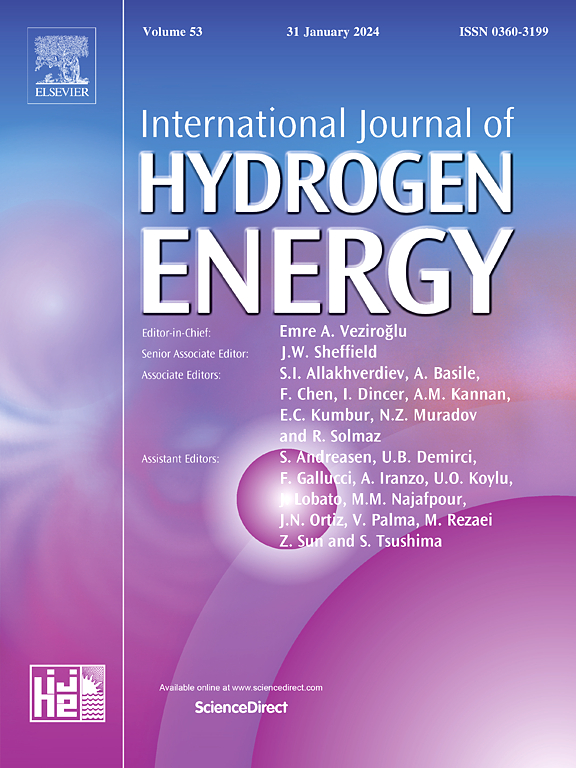用于碱水电解的双润湿电极表面
IF 8.1
2区 工程技术
Q1 CHEMISTRY, PHYSICAL
引用次数: 0
摘要
镍电极广泛应用于碱水电解,但其残留的过电位会导致电化学性能的严重损失。这在一定程度上是由于电产生的气泡在表面生长。因此,调整镍表面以更好地管理气泡是非常重要的。在这里,直接激光书写用于生成具有双重润湿行为的柱状表面。这结合了亲水性凹槽和疏水性波纹在每个支柱的顶部。此外,由于其中的毛细力,凹槽显示出超扩展特性,这使得表面完全湿润。疏水柱作为初始成核点,气泡在其生长过程中保持固定。这导致气泡的分离尺寸更大。结合电化学活性表面积增加了9倍,发现在-100 mA cm−2下析氢反应的过电位降低了约24%。本文章由计算机程序翻译,如有差异,请以英文原文为准。

Dual wetting electrode surfaces for alkaline water electrolysis
Nickel electrodes are widely used in alkaline water electrolysis, yet the remaining electrode overpotentials are leading to significant losses in electrochemical performance. These are partly due to the electrogenerated bubbles growing at the surface. Tuning the nickel surface for better bubble management is therefore of great relevance. Here, Direct Laser Writing is used to generate pillar-like surfaces with dual wetting behavior. This combines hydrophilic grooves with hydrophobic ripples on top of each pillar. Furthermore, the grooves show superspreading properties due to the capillary forces within them, which enables a fully wetted surface. The hydrophobic pillars serve as initial nucleation sites where the bubbles remain pinned during their growth. This results in a larger detachment size of the bubbles. In combination with an increase of the electrochemically active surface area by a factor of 9, a reduction of the overpotential for hydrogen evolution reaction of 24 % at -100 mA cm−2 is found.
求助全文
通过发布文献求助,成功后即可免费获取论文全文。
去求助
来源期刊

International Journal of Hydrogen Energy
工程技术-环境科学
CiteScore
13.50
自引率
25.00%
发文量
3502
审稿时长
60 days
期刊介绍:
The objective of the International Journal of Hydrogen Energy is to facilitate the exchange of new ideas, technological advancements, and research findings in the field of Hydrogen Energy among scientists and engineers worldwide. This journal showcases original research, both analytical and experimental, covering various aspects of Hydrogen Energy. These include production, storage, transmission, utilization, enabling technologies, environmental impact, economic considerations, and global perspectives on hydrogen and its carriers such as NH3, CH4, alcohols, etc.
The utilization aspect encompasses various methods such as thermochemical (combustion), photochemical, electrochemical (fuel cells), and nuclear conversion of hydrogen, hydrogen isotopes, and hydrogen carriers into thermal, mechanical, and electrical energies. The applications of these energies can be found in transportation (including aerospace), industrial, commercial, and residential sectors.
 求助内容:
求助内容: 应助结果提醒方式:
应助结果提醒方式:


